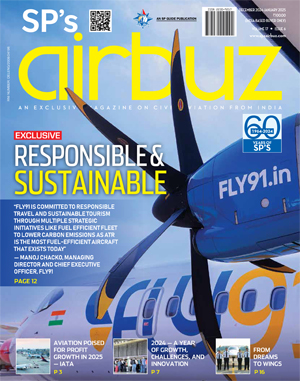Privatise or Perish

Flawed business strategies killed Air India’s potential to compete and crippled profitability. However, the political leadership has come to terms with reality and has articulated the imperative need to privatise the national carrier.
In October this year, the Minister of Civil Aviation Ajit Singh literally set the cat amongst the pigeons when he informed the media that the government had no choice but to privatise Air India. However, in the face of a volley of criticism from the opposition parties most vociferously from the leftist parties who seem to perceive insidious designs by private players, Ajit Singh backtracked immediately stating that the UPA Government had no intention to privatise the national carrier especially as it was approaching the end of its tenure. And while personally he had no intention to pursue this option, after the package of Rs. 32,000 crore already sanctioned, the government on its part, would not extend any further monetary assistance to the ailing carrier at least till 2021. “Hereafter, Air India would have to fend for itself,” said the beleaguered Minister. The government has already infused Rs. 16,300 crore into Air India in the past four years.
The Minister of Civil Aviation was not alone in his view on privatisation of Air India. Support came from Montek Singh Ahluwalia, Deputy Chairman of Planning Commission who stated that the practice by governments of owning and operating national flag carriers was itself becoming extinct, especially in the developed world. He felt that privatisation of Air India would be the right step especially in view of the financial mess the carrier is currently in. The airline has a cumulative debt of over Rs. 45,000 crore largely on account of the huge orders it has placed for new aircraft. However, following some cost-cutting measures and aggressive marketing strategy that are part of a turnaround plan, after accumulating huge losses for six years, there has been some improvement with the airline generating a cash surplus of Rs. 460 crore in the first quarter of the current financial year. But the apprehension is that this happy state may not continue for any appreciable length of time.
There are however several other problems confronting the airlines such as sub-optimal utilisation of aircraft, a bloated workforce, inefficient work culture, mediocrity, poor management practices, delayed decision-making, frequent labour dispute, crippling control by the Ministry of Civil Aviation and blatant exploitation of the airline by all and sundry. But the real storm clouds are gathering and in fact are already visible on the horizon. The entry of low-cost carrier AirAsia India and the proposed new full service airline, a joint venture between the Tatas and Singapore Airlines, will raise the competition for the national carrier to a new and unbearable level. While the situation for Air India has been further aggravated on account of the indiscriminate allocation by the Indian Government of bilateral rights to foreign carriers, the Jet-Etihad deal will effectively destroy the possibility of Mumbai or Delhi becoming a regional hub adversely affecting Air India’s operations. In addition, moves by other airlines of the Middle East such as Qatar Airways and Emirates Airline to enter the Indian market, could drive the last nail in the coffin of the national carrier. The future for the national carrier is undoubtedly bleak.
A feeble attempt was made to privatise Air India in 2000-01. Hindujas and Tata-Singapore Airlines were interested in the stake. While the former showed interest in both the carriers, Air India and Indian Airlines, the latter was interested only in Air India. Both the national airlines were later merged to operate under the currently held brand name, a step that is regarded by analysts as being not only thoughtless but badly executed. The successive managements including the political leadership involved, have been rather eloquent about the grandiose plans to not only restore Air India to its pristine glory of yesteryears but to transform the national carrier into a premier airline that is globally competitive. Sadly, the results have been otherwise. Flawed business strategies and decisions to withdraw from profitable routes only shrunk its network, killed its potential to compete and crippled profitability.
At this point in time, it would be in the interest of not only Air India but the nation as well to free the airline from the vice-like grip of the government. But as per the Centre for Asia Pacific Aviation (CAPA), such a move would require “bold and pragmatic action” that may not be possible in an election year. And whether it would be feasible with the new government in power in 2014, will depend entirely on its constituents and the influence the left parties would wield in the future.
What is redeeming, however, is that finally, the political leadership has come to terms with reality and has articulated the imperative need to privatise the national carrier.





